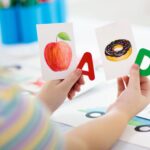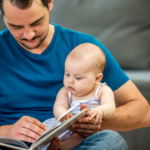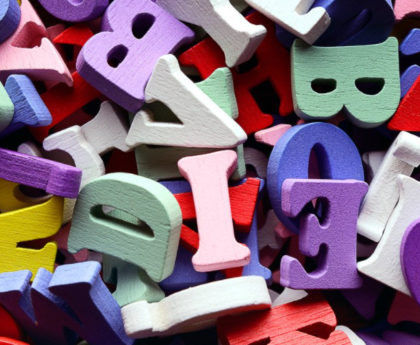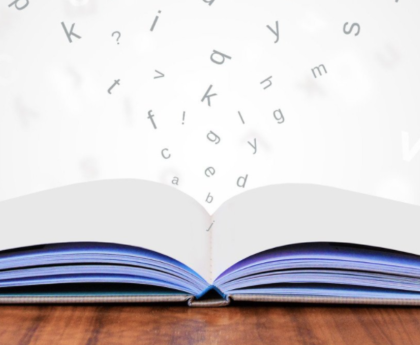During the first five years of life, children go through many important stages of development. One of these crucial stages involves early literacy.
If you want to understand your child’s literacy development and equip them for their future reading journey, you should know the developmental milestones for reading. Let’s explore the important reading milestones for your child, ages 1-5.
Your Child’s Reading Development
Reading milestones are significant “checkmarks” that children experience during their development. While milestones help parents and educators understand a child’s progress, they aren’t rigid timelines you should expect your child to follow perfectly.
Every child learns to read at their own pace as they acquire new skills. Some children may reach a milestone earlier or later than others, so don’t worry if your child isn’t at the same level as other kids their age.
By knowing the early milestones of reading, you can seek resources, books, and practices that support your child in whatever stage they’re in. Let’s look at these milestones!
Age 0-1: Absorbing Language and Hearing Stories
During infancy, babies have their first introduction to literacy: language development. According to the Simple View of Reading, language comprehension is half of the equation in learning to read.
- Babies learn that sounds and facial expressions have meaning.
- Infants focus their attention on people’s faces, interesting objects, and sounds in their environment.
- They begin to coo and babble, often reacting to parents and family members when spoken to.
- Babies past infancy may react to storybooks when adults read aloud to them, sometimes reaching out to touch, pat, or mouth the pages.
- By the age of one, babies may understand dozens of words and begin vocalizing one or more words.
In their first year of life, talk to and with your baby. Point out words for common objects and encourage your child to communicate back, even when they are babbling. You can also give your baby opportunities to interact with soft books, fun stories, and colorful illustrations. They likely enjoy engaging with you when you read aloud to them. These are signs your child is beginning to develop an interest in language and reading concepts.
Age 1-2: Introduction to Speaking and Pre-Reading Skills
Toddlers between ages one and two continue to babble and engage with others. They typically begin saying their first words and enter pre-reading skill development.
- Toddlers recognize and may even name familiar objects such as mom, dad, pets, candy, toys, and household items.
- They begin identifying objects in books. For example, when a parent asks: “Where is the puppy?” the child points at the picture of a puppy, regardless of whether or not they can say the word yet.
- Toddlers often select their favorite book based on the cover and ask for it to be read to them.
Your toddler won’t understand letters or words yet but they’re learning to verbally communicate. They also engage with books more. This is an exciting stage!
Read with your toddler often. Make storytime a fun and engaging bonding activity. Some of the most precious, cuddly memories can be centered around reading, which imprints your child with a positive attitude toward literacy.
Age 2-3: Expanding Vocabulary and Concepts of Print
Between ages two and three, children’s vocabularies grow. They pick up words indirectly at a rapid pace and will begin putting words together in phrases. In this stage, children often become aware of the concepts of print.
- Many children imitate the acts of reading and writing during play.
- Two to three-year-olds often know that drawings and writing are different, with different purposes.
- Three-year-olds begin learning the alphabet song and can point out the first letter in their name.
- They know the concepts of print: books contain stories, people tell stories by reading pages, and those pages contain words.
As your child achieves some of the final reading milestones for toddlers, encourage them to enjoy many different early literacy activities.
Age 3-4: Emergent Literacy and Learning the Alphabet
By age four, many children can connect spoken language with written text. Equipped with phonemic awareness and a budding vocabulary, they begin to play with letters and enter early phonics instruction.
- They can often identify rhyming words.
- In preschool or daycare, kids begin to develop an awareness of syllables.
- They may be able to name the beginning, middle, and end sounds of a word.
- Some children can match alphabet letters to their sounds.
- They can sing at least part of the alphabet song, name certain letters by sight, and begin tracing letters.
- Three to four-year-olds often point out familiar environmental print items such as brand logos, cartoon names, street signs, and recognizable letters in public.
- They might begin scribbling letters on their own or writing their name.
During the preschool milestones in reading, don’t pressure your child to master printing or learn every letter right away. Prioritize activities that make early reading and writing fun! Encourage them to keep practicing letters and word games at home.
Age 4-5: Becoming Kindergarten Ready
Right before kindergarten, some children have learned the alphabet and many of its letter sounds. Others are still learning the alphabet and exploring their first letter sounds with the help of adults. By now, many kids listen to more complex stories and appreciate children’s books.
- Four and five-year-olds retell stories they’ve heard, make plot predictions, and recognize narrative patterns.
- They might decode simple words in print by sounding out the beginning, middle, and ending letters.
- They can distinguish between uppercase and lowercase letters.
- They likely know that books in English are read from left to right and how to hold the book upright. They may also know where to locate a book’s title, author name, and chapters.
- During storytime, they can determine sequences and details of stories (who, what, when, where, why).
- They can come up with words that rhyme and even tell their own made-up stories.
This is a fun, exciting, and sometimes challenging stage of reading development. Your child is on their way to building reading confidence! However, it requires a lot of encouragement and explicit reading instruction.
Remember: kids begin to read at their own pace. Continue to read with your child, model fluent reading, and engage in early literacy activities with them.
Help Your Child Achieve Their Reading Milestones
You can support your child through each milestone of reading development. Some of the best things you can do are encourage them, offer praise and correction, and make reading a consistent, positive bonding experience for the both of you.
To enjoy fun, engaging literacy activities with your child at home, the Reading.com app guides you through early reading milestones. Download the Reading.com app today to support your child’s literacy development!





